St. Mark’s Square
St. Mark’s Square has so much to offer. Its Basilica, Astronomical Clocktower, Bell Tower, Doge’s Palace, and great water views made this a very memorable day.
Click on the first photo in each group and scroll to see the square photos at full size.
To start at the beginning of this series, visit Mediterranean Cruise.
Iconic Views and a Historic Clock
The first picture was taken from the balcony atop St. Mark’s Basilica and is an iconic photo of Piazza San Marco (St. Mark’s Square) and Venice. The bird’s eye view we got from the top (along with being able to go inside, of course) was well worth the entrance fee to get into the Basilica. We spent an excellent day exploring the Square and were in awe most of the day.
In 1499 St. Mark’s Clocktower, it’s astronomical clock and the lower buildings on either side were completed like many others in several European cities during that timeframe.
“It was placed where the clock would be visible from the waters of the lagoon and give notice to everyone of the wealth and glory of Venice. The lower two floors of the tower make a monumental archway into the main street of the city, the Merceria, which linked the political and religious centre (the Piazza) with the commercial and financial centre (the Rialto).” – READ MORE
After many renovations, the clock once again displays the original Roman Numerals I thru XXIIII around the outside with gilded stars as beautiful decorations. The signs of the zodiac are in counterclockwise order, so when they rotate clockwise slightly faster than the hour hand, the hour hand passes through each sign in the course of the year. It keeps perfect time and is absolutely beautiful!
St. Mark’s Basilica
What can you say about St. Mark’s Basilica, but WOW! Nicknamed “Church of Gold”, this church is just gorgeous! Everything about its marble columns, gold ground mosaics and fabulous interior have screamed wealth and power since the 11th century.
“When thinking about Saint Mark’s Basilica, the first images that come to the minds of many people are those of the mosaics and their golden backgrounds. More than 8000 square metres of mosaic cover the walls, vaults and cupolas of the Basilica. Essentially Byzantine in its architecture, the Basilica finds in the mosaics its natural integrating element. The mosaic decorations were developed through some 8 centuries of the Basilica’s history.
They represent stories from the Bible (Old and New Testaments), allegorical figures, events in the lives of Christ, the Virgin Mary, Saint Mark and other saints. The mosaics, with their warm colours, particularly gold, decorate the ample spaces of the Basilica, from 28 metres wide up to 21 metres high. As in Middle-Eastern churches, the interaction of the decoration with a dim, but ever changing light, according to the time of day, creates a range of evocative and intense effects.
In the Basilica’s mosaics can be found the most significant evidence of Venice’s history, the ambitions, faith, languages and trends characterizing the evolution of its art. From its Greek-Byzantine origins to the local artistic expressions and the skills to represent and interpret other outside influences, up to the modern, quite difficult art of preservation and restoration of these precious and complicated works.” – READ MORE
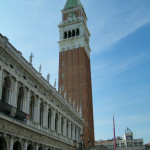 Campanile di San Marco
Campanile di San Marco
The Bell tower of Saint Mark square has been through many changes. Over the years, the tower was damaged many times by lightning and even an earthquake and in July 1902, it collapsed completely. That same evening, the council met and decided to rebuild, this time adding more internal reinforcement to prevent it from happening again. The new tower was inaugurated on April 25, 1912 (St. Mark’s feast day) exactly 1000 years after the building of the original tower was started.
“Dominating the Piazza with its 98 meters, and itself dominated by its pointed roof, that surmounts a gold angel, this Bell-tower seems the headlight of Venice, because it orders all its buildings. Square as a keep, it is possible to reach its platform by a soft slope which has only one broad step with each angle of the wall.” – READ MORE
Doge’s Palace
Doge’s Palace was another wonderful visit in St. Mark’s Square. We took the tour and were able to go inside and see many of the Institutional Chambers like the Council Chamber (pictured below). The self-guided tour took us through the courtyard and the corridor leading over the Bridge of Sighs, built in 1614 to link the Palace to the New Prisons. The bridge’s name comes from the suggestion that prisoners would sigh at their final view of beautiful Venice through the window before their imprisonment.
“A masterpiece of Gothic architecture, the Doge’s Palace is an impressive structure composed of layers of building elements and ornamentation, from its 14th and 15th century original foundations to the significant Renaissance and opulent Mannerist adjunctions. The structure is made up of three large blocks, incorporating previous constructions. The wing towards the St. Mark’s Basin is the oldest, rebuilt from 1340 onwards. The wing towards St. Mark’s Square was built in its present form from 1424 onwards. The canal-side wing, housing the Doge’s apartments and many government offices, dates from the Renaissance and was built between 1483 and 1565.” – READ MORE
“The doge was the senior-most elected official of Venice and Genoa; both cities were republics and elected doges.” – READ MORE
A Return Trip is Needed
What a fabulous day, rich in history and beauty. We really could have spent at least two more days in Venice – to see some more sights and museums, enjoy more of the local fare and wine, and maybe take that gondola ride after all.
Next up: Murano & Burano
Happy trails,
Barb

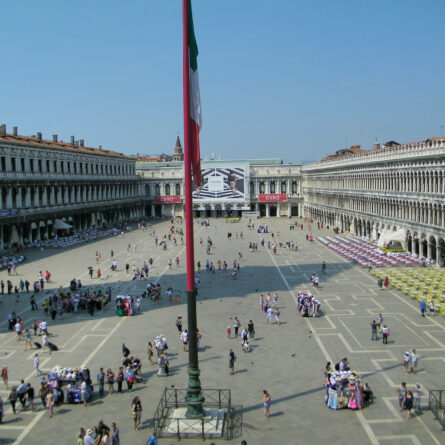
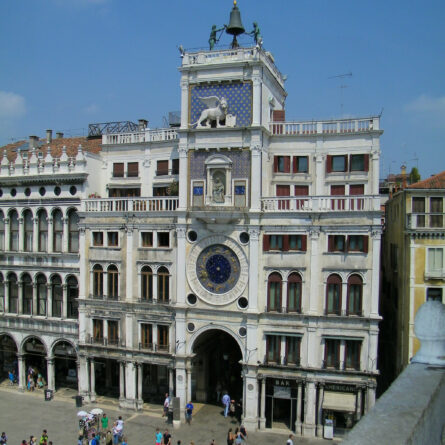
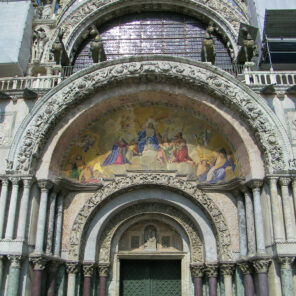
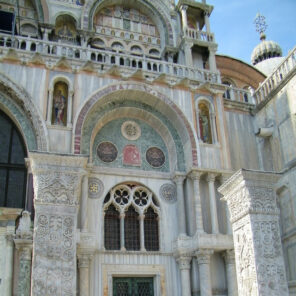
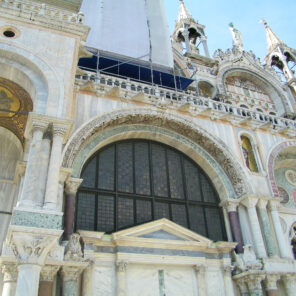


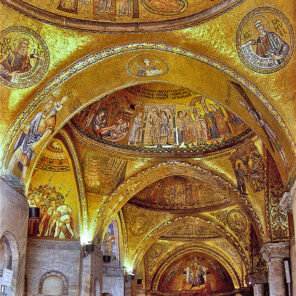
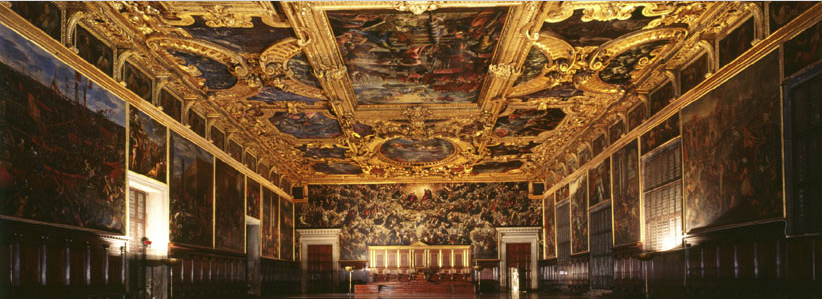
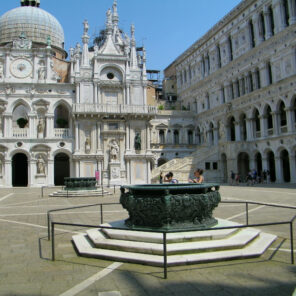
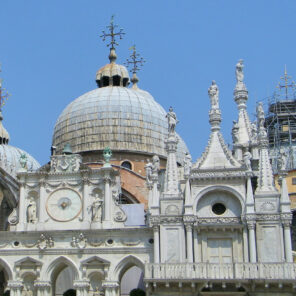
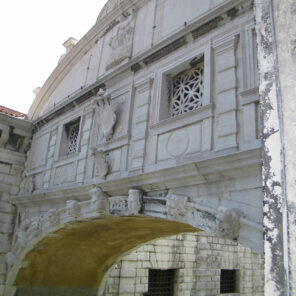


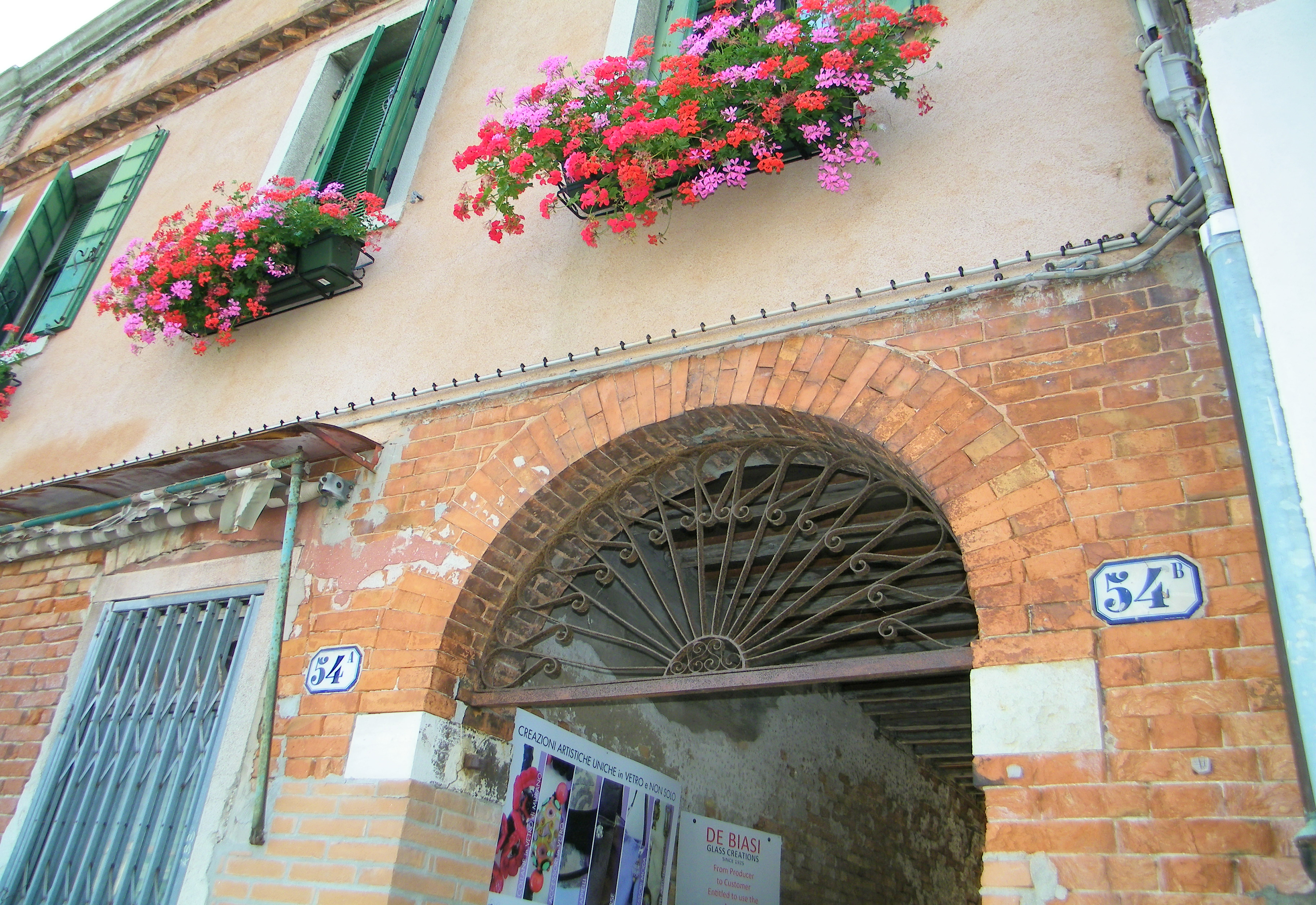
Comments are closed here.